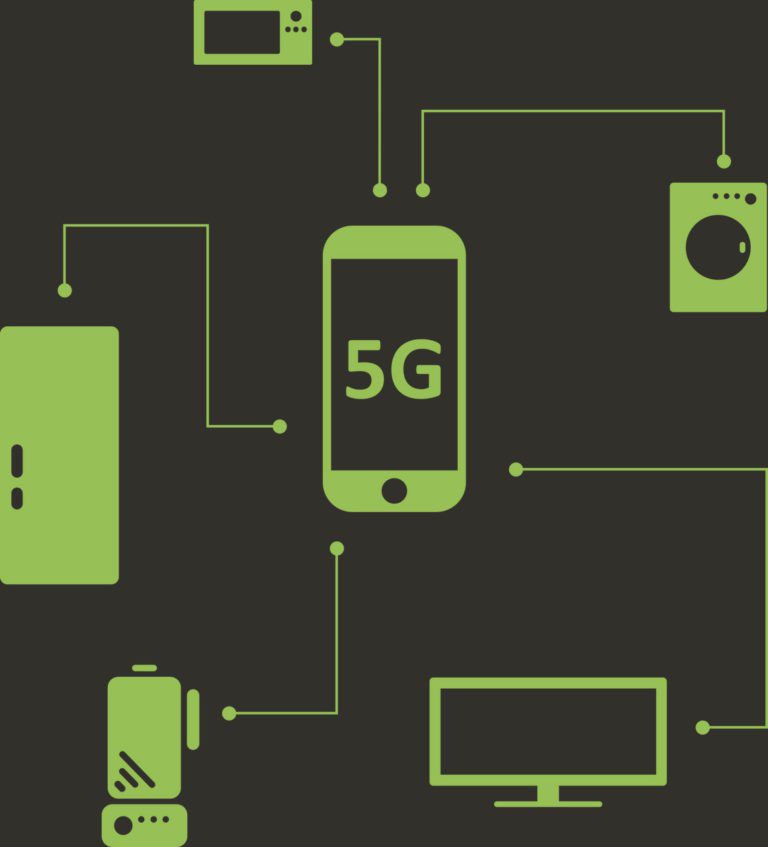With the talk of 5G revolutionizing the way we connect over the upcoming years, we wanted to shine some light on exactly what the 5G network is and what it means for you.
What is the 5G network?
“5G” is the name given to the latest (fifth) generation of mobile communications networks. Much like other mobile networks, 5G networks function by using a broader array of cell sites that split the territory into sectors and transmit encoded data through high-frequency radio waves. Each site is then connected to an infrastructure backbone, either through a wired or wireless connection. The primary difference between 4G and 5G is how the signals are transmitted. While 4G networks utilize large, powerful cellular towers to transmit signals, 5G signals are transmitted through a much larger number of smaller locations of cells that are located in light poles, building roofs, etc.
Why is the 5G network needed?
“There’s nothing wrong with 4G/LTE networks, why is 5G needed?” is a common question. It’s a relevant question since it’s true that the 4G network is improving over time. For example, the upcoming Qualcomm X24 modems will handle 4G speeds up to 2Gbps. The main issue with 4G is that it wouldn’t be able to support the data demands of the future. It’s predicted that by 2025, there will be over 75 billion connected devices in the world (3 times what we currently have).
What advantages will the 5G network offer?
There are multiple advantages of 5G over older mobile networking technology. Here are some of the most substantial advantages of updated technology:
MUCH Faster speeds
5G promises speed as high as 20Gbps by some estimates. This is significantly faster than the max speed of 1000Mbps for LTE-Advanced (the latest LTE network).
Lower Latency
Network latency is simply the amount of delay (typically in milliseconds) in a network. 5G latency should be in the 1-10ms range compared to 50ms for most 4G/LTE connections. This will reduce delay on every application that uses the network, including phone calls, video calls, video conference, online games, real-time VR/AR etc. The lower latency will be key to applications that require real-time feedback where even milliseconds matter (more on this further down).
Increased Connectivity
Another major benefit is that more devices are able to connect to the network without adversely affecting performance. This is vital as the number of Internet-connected devices skyrockets.
Unlocks future technology
Self Driving Cars require a low latency connection to transmit data. Smart cities with improved traffic signals, energy grids, transportation systems, emergency services and more can benefit from the high-speed connection as well. 5G is key to making the most of the Internet of Things.
Revolutionize broadband
5G may even be a substitute for home internet. Verizon has already rolled out its 5G home internet in a few areas. It produces the speed and latency of a fiber connection but with a much lower infrastructure cost. This makes it a good candidate for home internet in the near future. It’s foreseeable that other communications companies will soon be following suit.
Will I need new equipment?
Unfortunately, 5G isn’t compatible with existing 4G equipment. Much like the change from 2G to 3G, 3G to 4G, etc., new equipment with the correct hardware to communicate with the network will be required.
When will the 5G network be available?
Perhaps the most exciting part about 5G is that it’s being tested in some areas right now! 5G capable phone and products should be hitting the market in 2019. This technology isn’t just for mobile phones either. Everything from laptops to tablets to automobiles will feature 5G connectivity.
In summary, 5G could potentially change the way a good portion of devices connects to the Internet. If you have any IoT or technology related questions, feel free to call SandStorm IT at 901-475-0275.

